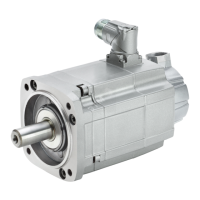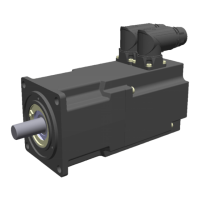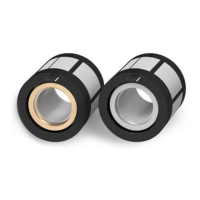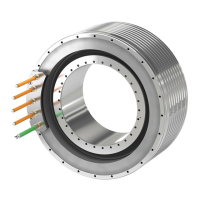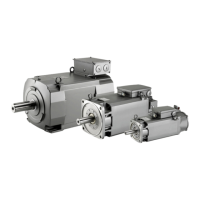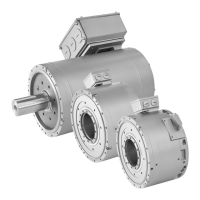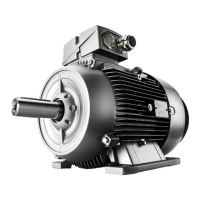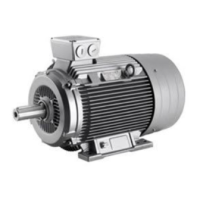5.3 Mounting instructions
NOTICE
Damage to shaft sealing rings caused by solvent
If shaft sealing rings come into contact with solvents when preservation coating is removed,
the shaft sealing rings can be damaged.
• Avoid contact between solvents and shaft sealing rings.
NOTICE
Damage to the motor due to radial eccentricity at the shaft extension
Radial eccentricity and axial forces at the shaft extension can damage the motor.
• Mount the motor in such as way that no radial eccentricity and axial forces at the shaft
extension occur.
• Adhere to the specications on the rating plate.
• Observe the warning and information plates on the motor.
• Check the permissible ambient conditions (e.g. temperature, installation altitude)
ant the installation site.
• Thoroughly remove any anti-corrosion agents from the shaft extension. Use commercially
available solvents.
• Ensure sucient dissipation of the heat loss. See Chapter "Cooling (Page 46)"
(page 36)".
• If the motor is installed vertically with the shaft extension facing up, ensure that no liquid can
enter the upper bearing.
• Ensure that the ange is in even contact with the mounting surface.
• Use hexagon socket head cap screws with a property class of at least 8.8.
• When tightening the fastening bolts avoid any uneven stressing.
• Observe the tightening torques for the xing screws (see table below).
Tightening torques for fastening bolts
The general tolerance for the tightening torque is 10%. The tightening torque is based on a
friction coecient of μ = 0.14.
Table 5-3 The data apply to 1FK2 and 1FT2 motors.
Motor Bolt DIN 7984 Washer ISO 7092
in mm
Tightening torque for bolts (not for elec‐
trical connections)
1F☐2☐03 M5 5 (d2 = 9) 4 Nm
1F☐2☐04
1F☐2205
M6 6 (d2 = 11) 8 Nm
Mounting
5.3 Mounting instructions
SIMOTICS S-1FK2 synchronous motors for SINAMICS S120
60 Operating Instructions, 02/2022, A5E46089564B AD

